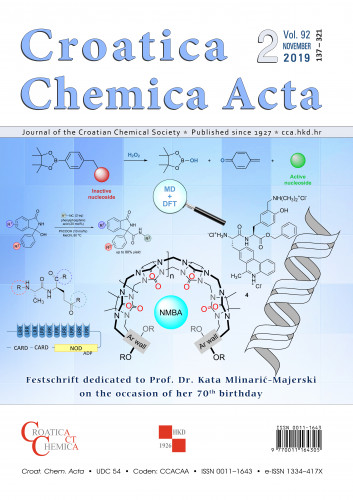Four novel salts of chloranilic acid (H2CA; 3,6-dichloro-2,5-dihydroxy-1,4-quinone) with organic cations pyridinium (Hpy+), piperazinediium (H2ppz2+), 4,4'-bipyridinediium (H2bpy2+) and 1,10-phenanthrolinium (Hphen+) were prepared and structurally characterised: (Hpy)2CA (1), (H2ppz)CA (2), (H2bpy)CA·4H2O (3) and (Hphen)HCA·MeOH (4). Supramolecular architecture is based on extensive hydrogen bonding and π-stacking. The central motive is chloranilate dianion which acts as an acceptor of two bifurcated hydrogen bonds. Topology and dimensionality of hydrogen bonded networks can be tuned by use of different cations: thus discrete motives, 1D chains and 2D layers were observed. Three different types of π-stacks are present: aromatic stacks, quinoid stacks and stacks of alternating quinoid and aromatic rings.
Sažetak
![Supramolecular architecture of chloranilate salts with organic cations : [pi]-stacking vs. hydrogen bonding / Krešimir Molčanov, Marijana Jurić, Lidija Androš Dubraja.](edb6zs2a/repd/g/lm/eoh/glmeoh96dnvr.jpg)
 Croatica chemica acta : 92,2(2019) / editor-in-chief Olga Kronja.
Croatica chemica acta : 92,2(2019) / editor-in-chief Olga Kronja.